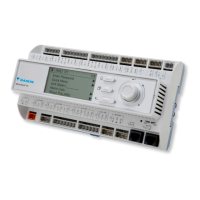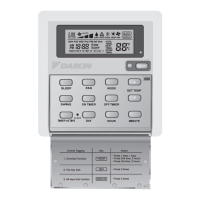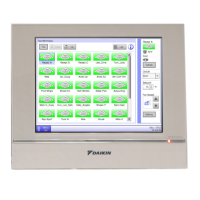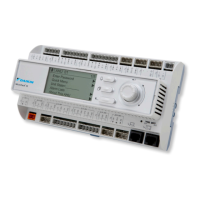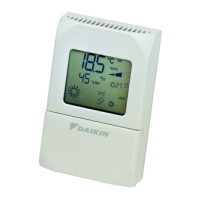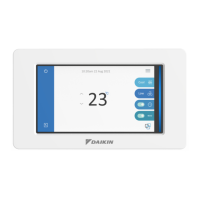Point 5 The Cooling Interstage Timer has expired. The
discharge air temperature is above the Effective Discharge
Cooling Set Point by more than half the Discharge Cooling Dead
Band and DTA (Area E + Area F) is equal to DTB (Area C + Area
D). Therefore, cooling is staged up. As a result, the discharge
air temperature drops, the Cooling Interstage Timer is reset, and
DTB is subtracted from both DTB and DTA. This zeros both DTA
and DTB since they are equal. Note that the elapsed time since
the last stage change in Figure 16 is 6.3 minutes.
Point 6 The Cooling Interstage Timer has expired. Because the
cooling load is now increasing, the discharge air temperature
does not fall below the Effective Discharge
Cooling Set Point by more than half the Discharge Cooling
Dead Band. No staging action occurs for two reasons: (1) the
discharge air temperature is within the Discharge Cooling
Dead Band and (2) DTB (Area H) is not yet equal to DTA
(Area G). Even if the discharge air temperature falls below
the Effective Discharge Cooling Set Point by more than half
the Discharge Cooling Dead Band (as shown just after Point
6), a stage down does not occur because DTB remains less
than DTA. The discharge air temperature starts rising again
because the load is increasing.
Point 7 The discharge air temperature is again above the
Effective Discharge Cooling Set Point by more than half the
Discharge Cooling Dead Band. Since the Cooling Interstage
Timer expired at Point 6, cooling is staged up. As a result, both
DTA and DTB are zeroed and the Cooling Interstage Timer
is reset. Note that DTA and DTB are both zeroed since two
consecutive stage increase actions occurred. The discharge air
temperature continues to rise, however, because the cooling
load is still increasing. Note: that the elapsed time since the
last stage change in this illustration is 11.0 minutes.
Point 8 The Cooling Interstage Timer has expired. Since the
discharge air temperature is still above the Effective Discharge
Cooling Set Point by more than half the Discharge Cooling
Dead Band, another stage-up occurs. As a result, DTA (Area
K) is again zeroed out (DTB remains zeroed) and the Cooling
Interstage Timer is reset. The cooling load has leveled out, and
the discharge air temperature drops.
Point 9 The Cooling Interstage Timer has expired at the
same time that DTB (Area M) becomes equal to DTA (Area
L). Therefore, cooling is staged down, the Cooling Interstage
Timer is reset and DTA is subtracted from both DTA and DTB.
This zeros both DTA and DTB since they are equal.
Figure 16: Average Discharge Control Method
OM 920-6 • MICROTECH UNIT CONTROLLER 110 www.DaikinApplied.com
operaTor’s guIde
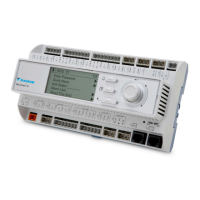
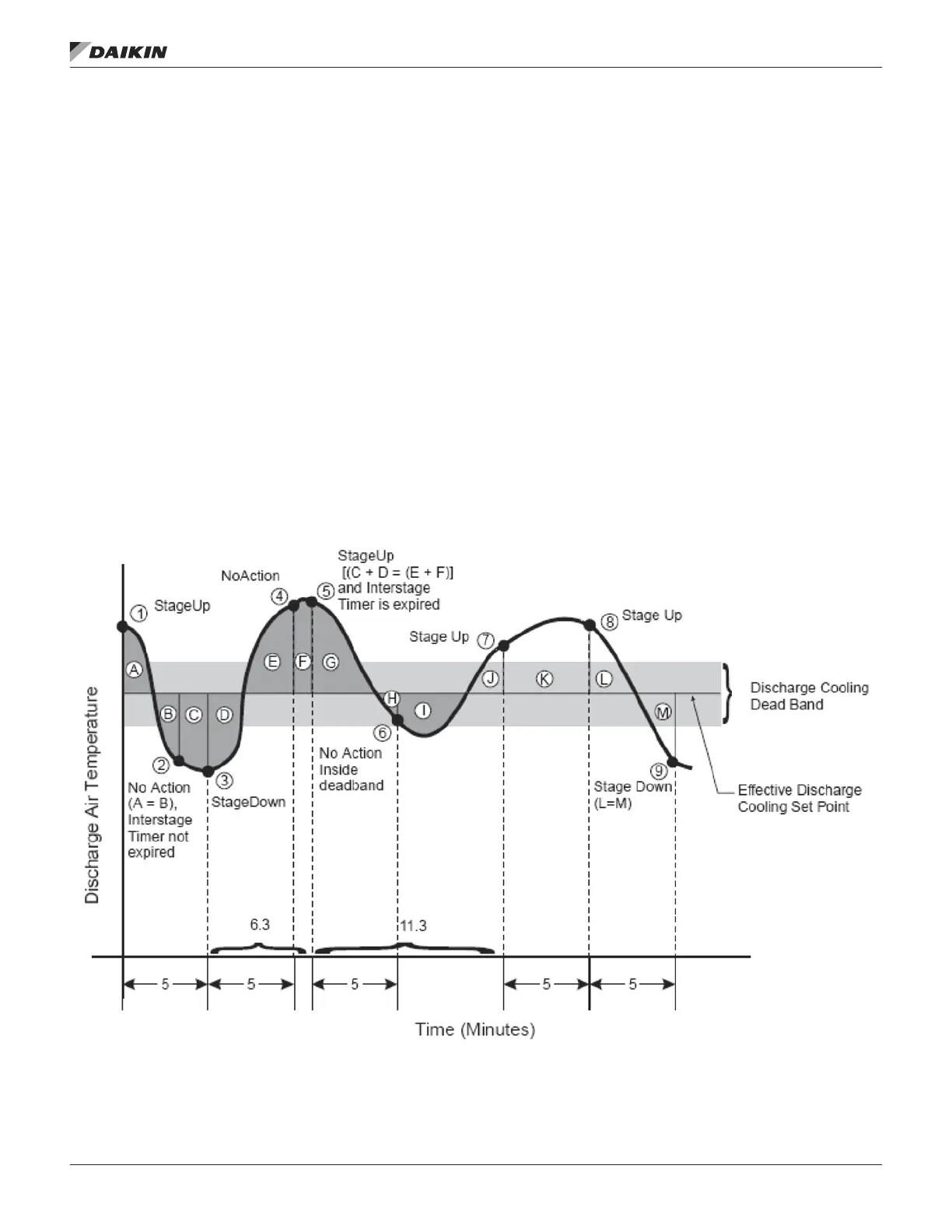